NCORE: Supporting the energy transition by reducing reliance on copper
The Copper Problem: It’s likely to be worse than you may have heard.
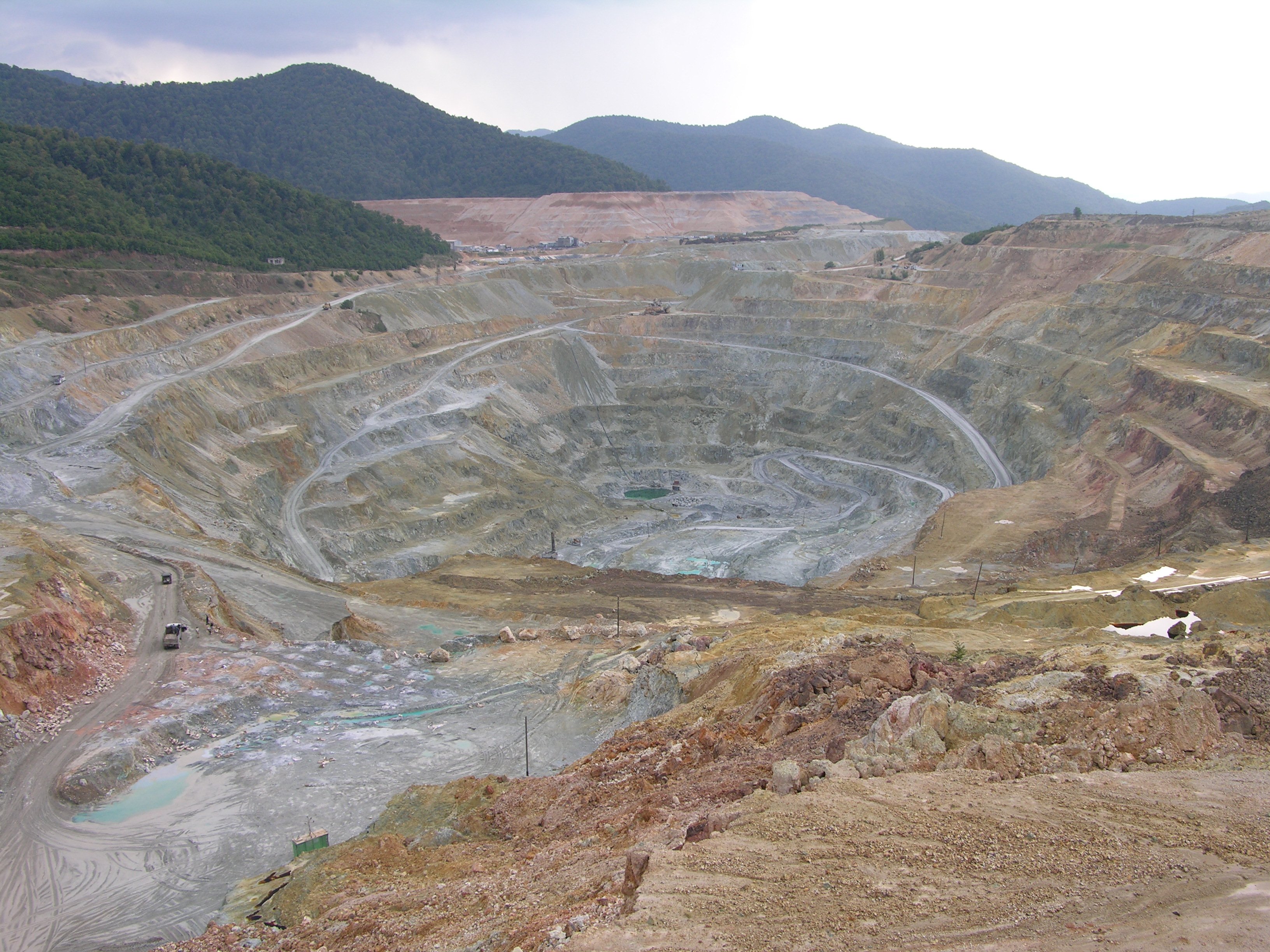
An open pit copper mine, Republic of Georgia. Source USGS
Copper is an essential ingredient for the energy transition, and the shift to renewable energy sources (solar and wind), electric vehicles (EVs), and the related expansion of the electric grid is expected to drive an increase in demand that will exceed current and projected sources by 2030 if not sooner. A shortage poses risks to the goal of achieving net zero emissions, as rising prices and supply constraints may hamper the adoption of EVs and renewable energy sources. Moreover, declining ore grades (the amount of copper relative to waste rock) are increasing the amount of energy expended to mine copper and other critical materials, reducing, or even potentially eliminating the emissions benefit of EV adoption.
Electric vehicles use as much as 4x the amount of copper as an internal combustion engine (ICE) vehicle. Batteries are the second largest use of copper in an EV, and the solid copper foils used as a current collector on the anode account for more than 10% of the weight of a typical lithium-ion battery. META is developing NCORE™ polymer composite current collectors, which eliminate more than 90% of the copper content. Reduced weight increases battery energy density and vehicle range, while a fuse-like feature contributes to enhanced battery safety, helping inhibit battery fires.
Copper Now Classified as a Critical Material
In July 2023, the U.S. Department of Energy published a new Critical Materials Assessment report, to evaluate supply chain security for clean energy technologies. Copper was among the major materials which were expected to move from noncritical in the short term to near critical in the medium term, due to their importance in electrification. Solar PV and offshore wind consume 2 and 5 times more copper per megawatt of installed capacity compared to traditional sources such as coal and natural gas.
Compared to a typical ICE vehicle, which uses about 8 to 22 Kg per vehicle, electric vehicles require increasing amounts of copper, depending on the vehicle type and related battery size: hybrids contain 38 Kg, plug-in hybrids require 60 Kg, and battery EVs require 83 Kg. Battery electric buses contain 370 Kg, and a typical 18-wheeler tractor-trailer truck will require a battery about 11 times the size of a personal car battery.
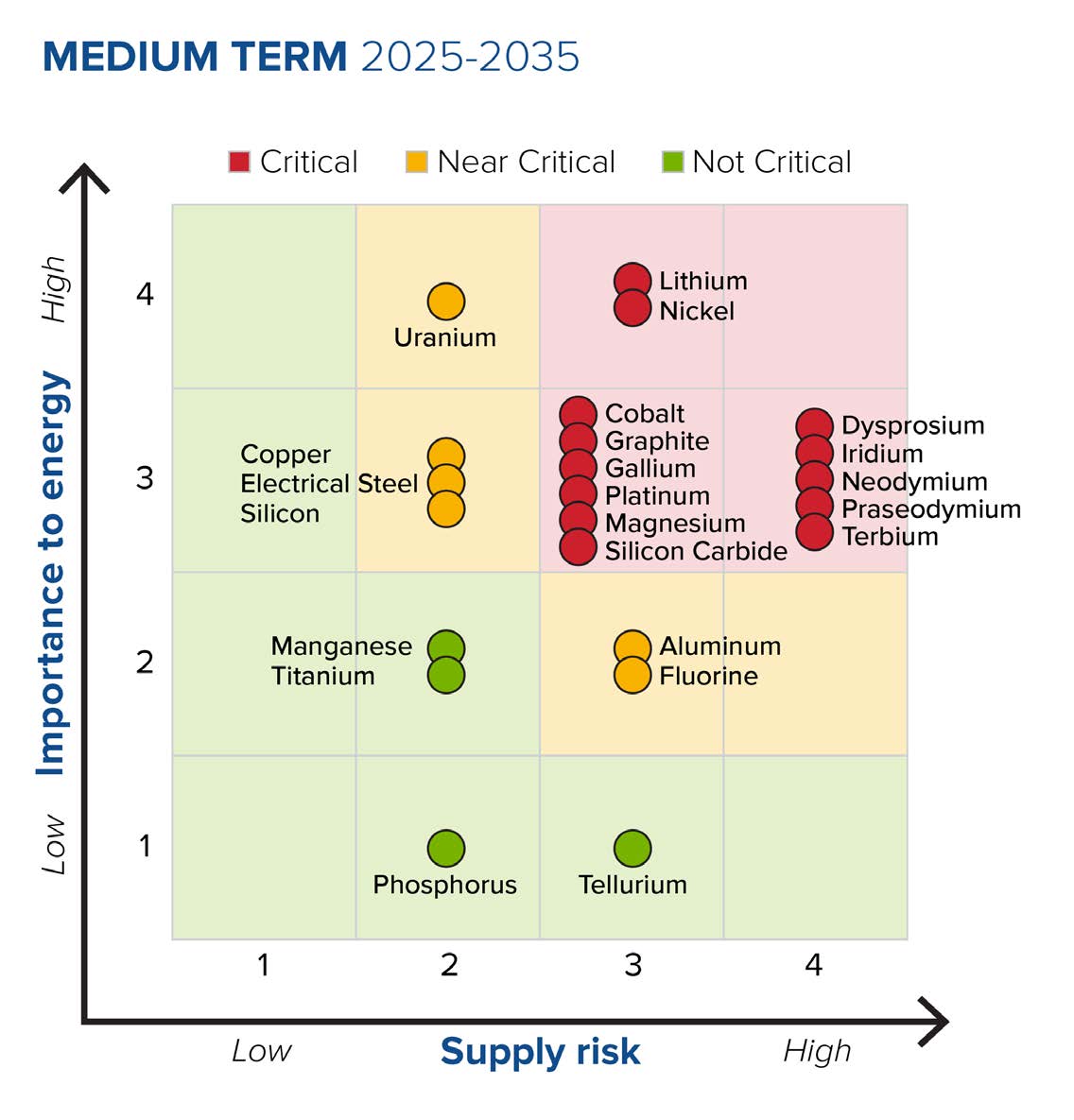
Medium term criticality matrix. Source: U.S. Department of Energy
In all four trajectories modeled by the DOE, copper demand exceeds current production by 2025 and surpasses current production capacity between 2025 and 2030. The S&P Global report, The Future of Copper, projects copper demand growth from about 25 million metric tons (MMT) in 2025, to about 50 MMT in 2035, and continuing to reach 53 MMT in 2050. Depending on energy transition growth scenarios, a shortfall of up to 9.9 MMT is projected in 2035. Resource nationalism is also an issue, with 51% of copper production in 2021 coming from countries classified as either politically unstable or extremely unstable (Source: Statista).
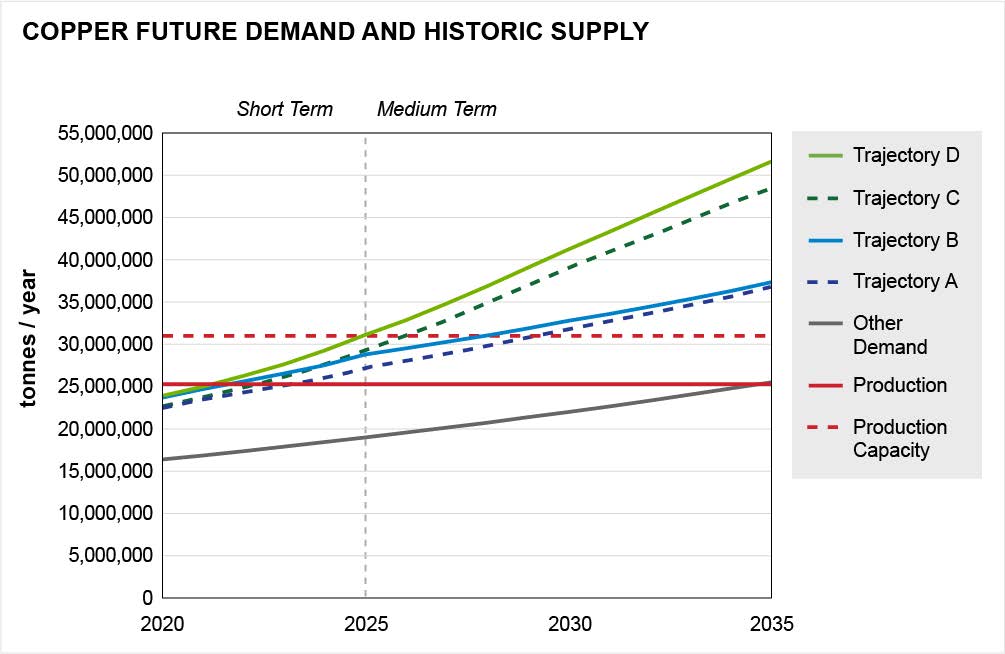
Copper demand trajectories, current production, and production capacity. Source: U.S. DOE
The Problem of Declining Ore Grades
Over time, the richest mineral deposits tend to be extracted first. As prices increase, lower grade ores may become economically viable, and the mix of ore grades varies both within individual resource sites and from location to location. Nevertheless, the long-term trend has been for ore grades to decline. Copper ore grades declined from 2.0% in 1900, to 1.0% in 2000, 0.7% in 2020, and are projected to reach 0.5% in 2030, according to Bloomberg NEF. The World Copper Factbook 2022, published by The International Copper Study Group, highlighted declining ore grades as constraint on copper production and a serious issue in developed copper areas such as the USA and Chile.
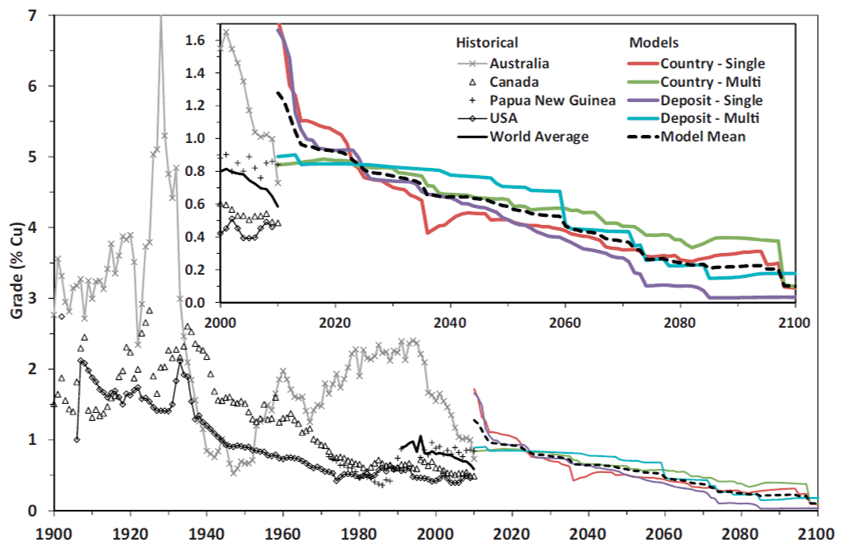
Copper ore grades in the past. Scenarios not ‘predictions’ for the future. Source: Stephen Northey
Declining ore grades mean that more tons of material must be processed to produce a given amount of copper. The energy used is typically in the form of fossil fuels, so a green use of copper such as an EV must first recover a rising amount of upstream supply chain emissions before it can yield a net emissions reduction in use.
Targeting Copper Current Collectors in Batteries for Weight Reduction and Sustainability
As noted above, EVs use significantly more copper compared to ICE vehicles. As shown below, the batteries account for the second largest use of copper, and the figures here are for a relatively small battery pack. By replacing the solid copper foil with NCORE™ polymer composite current collectors, more than 90% of the copper content can be eliminated, reducing the weight of the current collector by about 85% and the battery cell weight by about 5%. Reducing copper content and weight increases the energy density of the battery pack, allows the vehicle to travel further on a charge, and improves the sustainability of the battery supply chain.

Pounds of Copper Used in an EV. Source: Copper Alliance
META is currently producing 10cm x 20meter NCORE™ sample rolls on 6 μm PEN substrate, optimizing and characterizing the material properties. In collaboration with our partners, DuPont Teijin Films and Mitsubishi Electric Europe, we are designing/sourcing a pilot-scale roll-to-roll system to produce longer/wider rolls for pilot production of larger quantities of batteries. There is strong OEM interest, including for more PLASMAfusion® deposition applications.
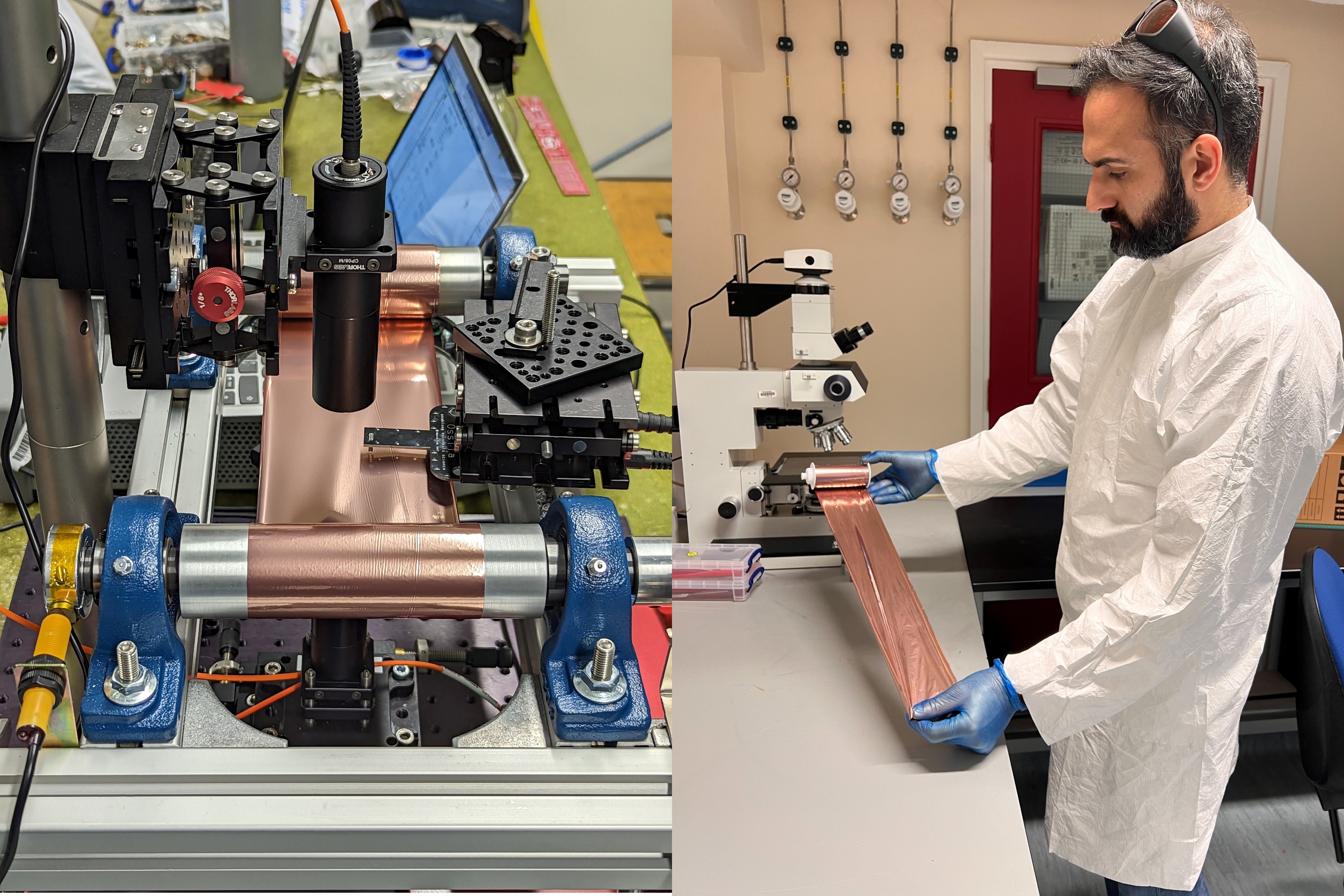
NCORE™ development in the META Oxford, UK facility
How NCORE™ Works
Current collectors are essential components of lithium-ion batteries, consisting of aluminum (Al) and copper (Cu) foils for the two electrodes, the cathode and anode, respectively. Collectively, current collectors account for about 15% of the total battery cell mass and do not actively contribute to battery capacity. Al has a low density of 2.70 g/cm3 while Cu is much heavier at 8.96 g/cm3 such that Cu foil current collectors account for more than 10% of the weight of a typical Li-ion battery.
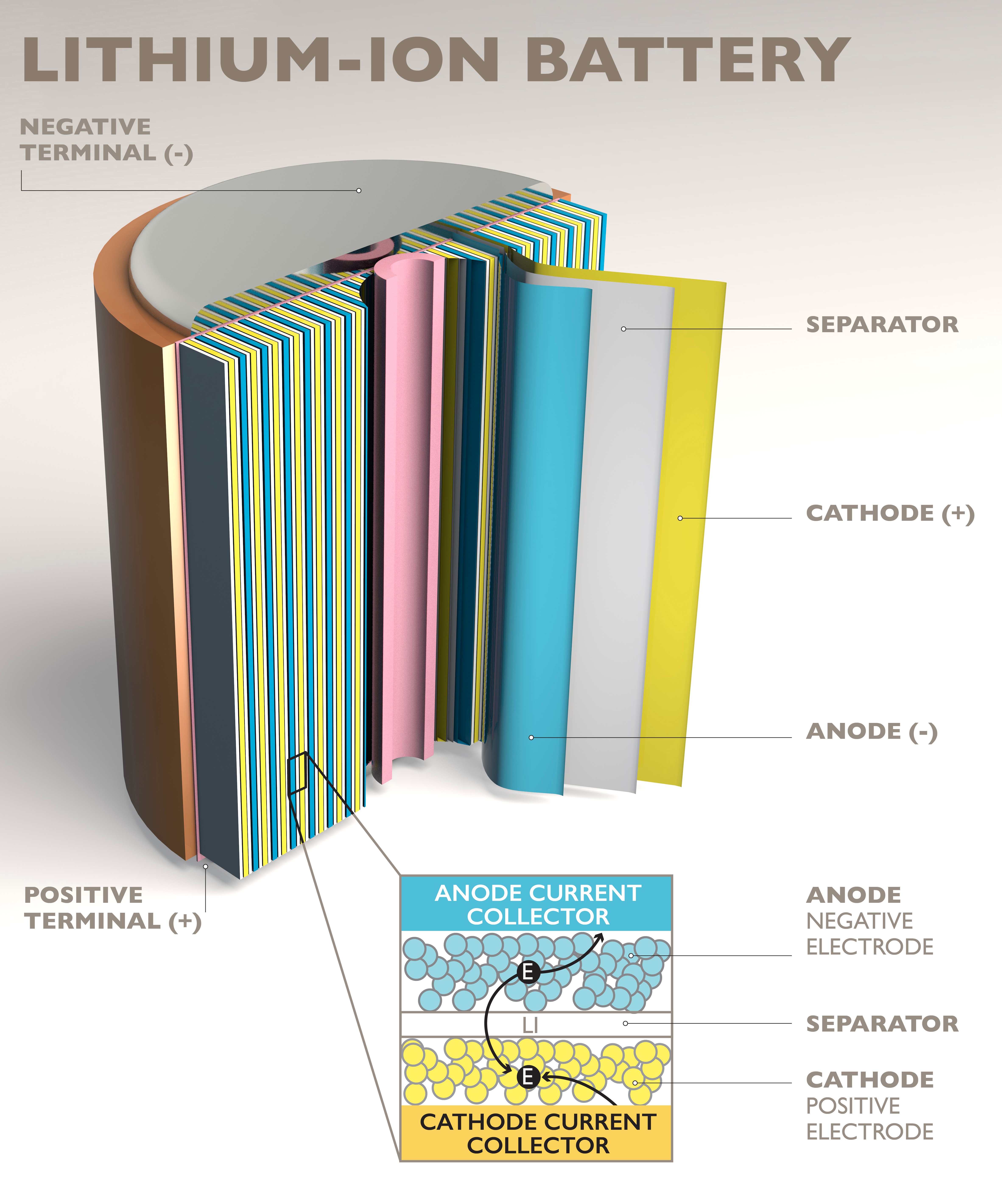
Schematic of a typical lithium-ion battery
Plastic substrate acts as a fuse to impede thermal runaway
Patented PLASMAfusion® vacuum deposition is used to coat a PET/PEN plastic substrate with thin layers (150-250nm) of Cu on each side and embedded metal bridges for through conductivity, which promises the same functionality and cost as copper foil, while providing several benefits. Weight is reduced by ~85% and reduced thickness allows more active material, increasing energy and power density. In case of thermal runaway, the plastic melts, improving safety by retarding battery self-ignition. Lower copper content reduces the energy input to produce the battery and enhances recycling.
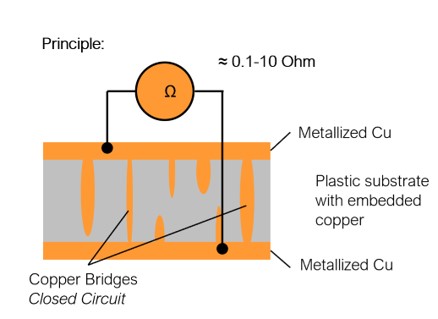
NCORE™ Principle
